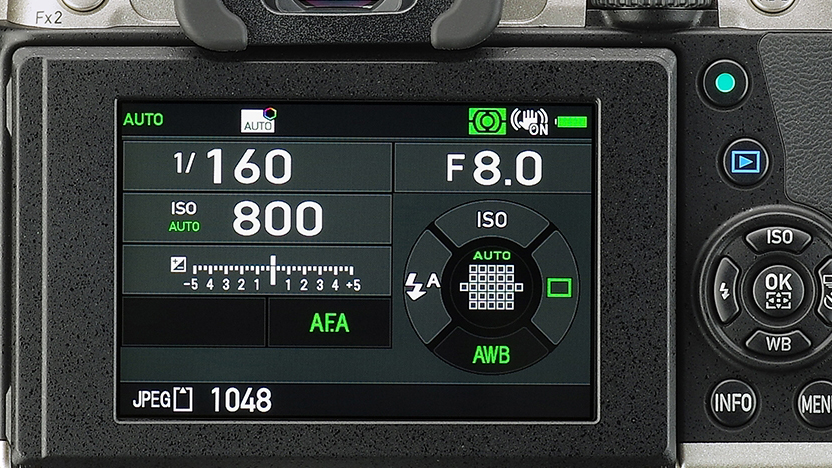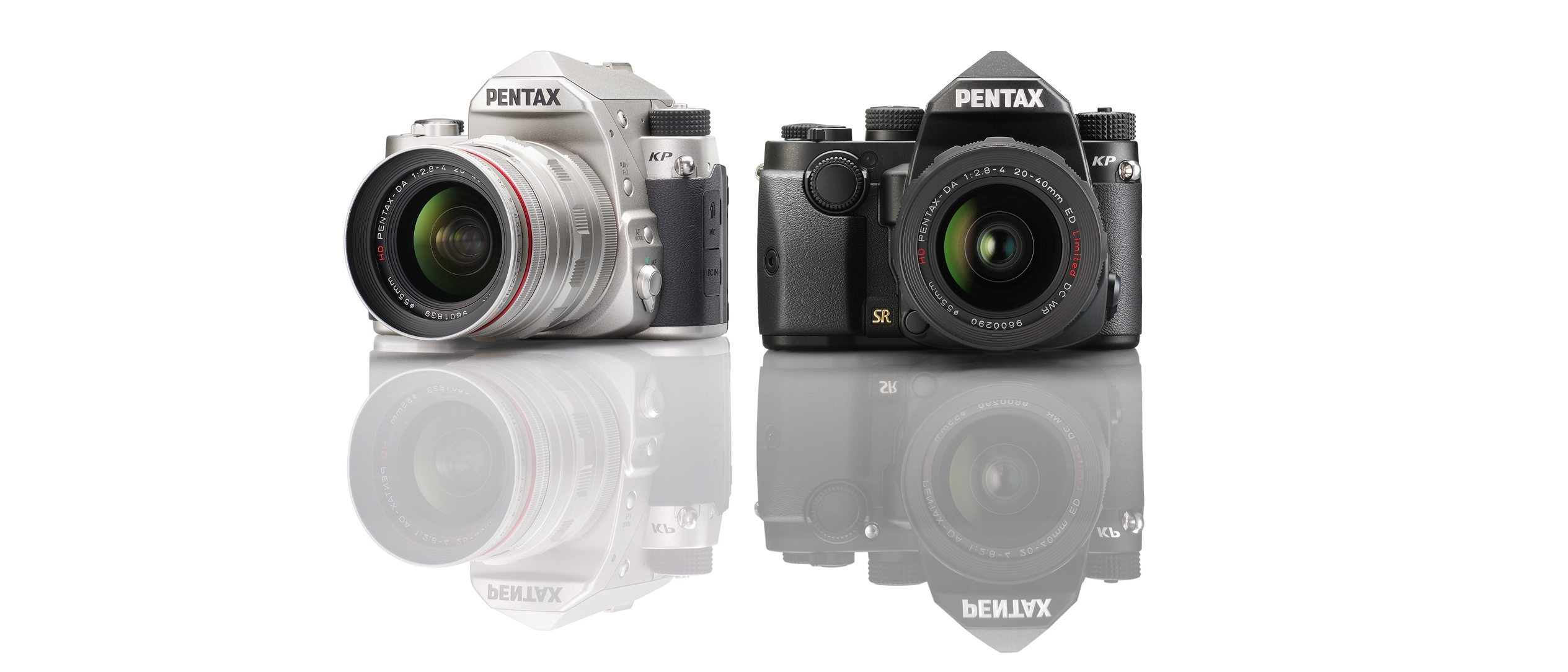Why you can trust TechRadar
Performance
- 7fps burst shooting
- Screen resolution disappointing
- Logical menu design
There is a very brief delay upon starting up the Pentax KP, before the information appears inside the viewfinder and the focusing system becomes active, but this shouldn't present any practical issues for anything but the most spontaneous occasions.
Navigating the menus is relatively straightforward, thanks to a logical structure and the welcome absence of any esoteric abbreviations, although the lack of color coding can make things a little harder to find than needs be. It’s nice to find that there’s almost no lag as you adjust shooting parameters and browse through menu screens, with the camera responding promptly to turns of the command dials.
Navigating the menus is relatively straightforward, thanks to a logical structure and the welcome absence of any esoteric abbreviations
In addition to its direct controls in and around the menu pad, there’s the option to bring up the electronic level over two axes via a button in the top-left-hand corner of the rear plate. Pressing the Info button, meanwhile, brings up 20 commonly used settings for quick adjustment (and 15 in the movie mode), and you can customize this display if you wish to add your most frequently used options.

The viewfinder is a generous size and relatively clear, though perhaps a touch on the warm side. There’s not quite the wealth of information displayed on it that we tend to see on similar cameras, but all the basics are there. The 25 central AF points are quite small, but their brightness makes them easy to see, while the peripheral points on either side of the central array are shaped as lines rather than points, which makes them more visible.
The LCD screen moves freely when adjusted, and its ability to face upwards – just beyond a 90-degree angle – is very useful for low-level shooting, particularly as the hinge on which it's mounted allows it to be pulled away so the viewfinder’s eyecup doesn't obstruct it. Its 45-degree downwards angle makes it less flexible for high-level shooting, but a quick adjustment to the Outdoor View mode, and the option to bring up the electronic level, means it’s still very usable here.
In balanced light, such as indoors, the LCD screen’s viewing angle and contrast are very good. The Outdoor View mode is a very effective way to quickly boost the monitor’s brightness when shooting in harsh light, as it can be a little more difficult to see in these conditions. Admittedly, this is an issue that affects many screens, and the fact that you can adjust the screen to a range of angles makes it less of a concern here.
The display’s 3-inch dimensions and 921,000-dot resolution may seem a little behind the times next to current models
The display’s 3-inch dimensions and 921,000-dot resolution may seem a little behind the times next to other current models, and a comparison with another current DSLR does show it to lack the bite of a 1.62 million-dot screen. In isolation, however, it’s good enough for assessing focus and checking details in magnified images, although it’s a shame it’s not touch-sensitive.
Sign up for breaking news, reviews, opinion, top tech deals, and more.
The spec sheet states that the Pentax KP can fire at 7fps for up to seven Raw+JPEG frames, or alternatively eight raw frames on their own, and we found this to be exactly right. It also states a burst depth of 28 frames when shooting JPEGs on their own, but we found it typically exceeded this figure, sometimes by just a few frames but making it to 51 frame on one occasion.
The camera also doesn't lock up like some others as these shots are being processed, so you're able to access the menus and shoot further frames while this is going on. If you shoot JPEGs on their own you may be perfectly happy with this burst-shooting performance, although an eight-frame depth for raw images is somewhat on the low side.
The camera's electronic shutter is really designed for live view shooting, where it's capable of capturing the image with no sound (in comparison with the mechanical shutter). You don’t enjoy the same benefit when shooting through the viewfinder, as the mirror still needs to swing up when the exposure takes place, although you do still gain the same fast shutter speeds here. This is not only very useful for fast-moving subjects, but also if you happen to find yourself in bright sunlight with a wide-aperture lens.
Image quality
- ISO100-819,200
- Pixelshift technology
- Shadow and highlight correction
Previous Pentax DSLRs have had a tendency towards underexposure, but this doesn't appear to be the case with the KP. While the odd image could benefit from a little positive exposure compensation, the only times where the camera noticeably underexposed was in the types of conditions that would force many cameras to take the same approach, such as when faced with some backlighting and/or lots of highlight detail; but even here it didn’t fare too badly, and could generally be left to its own devices.
It’s a good idea to enable the Shadow Correction and Highlight Correction options, as these improve the balance of images captured in more problematic conditions.
Colors are also very pleasing on the standard Bright Custom Image setting, delivering noticeably punchier results than what most other cameras prefer as their default output. In the vast majority of situations the colors are appropriate to the scene and not over the top, although you can select the Natural setting where you want something a little more faithful. Switch to the Vivid option, meanwhile, and you get a nice extra punch that makes landscape images and other images featuring skies and foliage sing.
Up to ISO12,800 or so images are still usable at modest sizes, and even some images at ISO25,600 can be salvaged, although it’s very difficult to process most images captured at higher settings without details being severely compromised.
This is certainly a very good performance from a camera with an APS-C-sized sensor, although the KP appears to have followed Nikon’s D500 in having far too many additional unusable ISO settings; at least in the kinds of conditions for which high ISOs are designed, you probably won’t want to call on any of the six-figure ISO range.
Thankfully, the camera’s effective Shake Reduction II system means you may not have to. Shooting inside a dark church, the system easily delivered enough compensation to get images sharp enough, even at shutter speeds as low as 1/8 sec. As a sensor-based system you won't appreciate this effect when composing images through the viewfinder, which also means the view isn't as steady for composition, although you can see it working when you switch to live view.
The camera’s Pixel Shift Resolution mode manages to combine its four exposures quickly, and the difference in image quality over standard images is noticeable. It does very well to clarify finer details, although this can cause a slight patterning in areas of little detail. For tripod-based shooting it’s certainly worth considering, although the difference between what it outputs and a carefully sharpened raw file captured without this feature isn't perhaps as great as you may imagine.
Although it lacks 4K video recording, the Pentax KP otherwise doesn't compare too badly in terms of what it offers the videographer. There are 24, 25 and 30p recording options, focus peaking, manual controls over the audio level and a port to use external microphones. Even so, video quality is something of a mixed bag, with very effective Shake Reduction and decent audio quality, but poorly detailed footage and rolling shutter being issues.
Current page: Performance and image quality
Prev Page Build, handling and AF Next Page Verdict and competition



